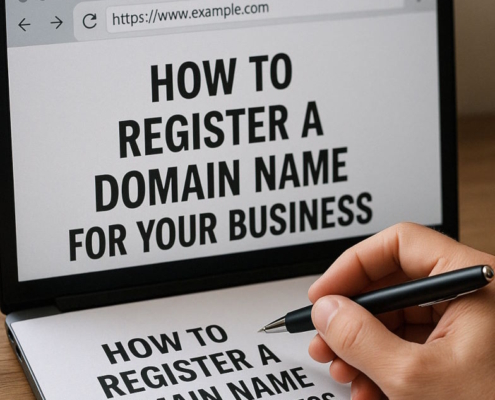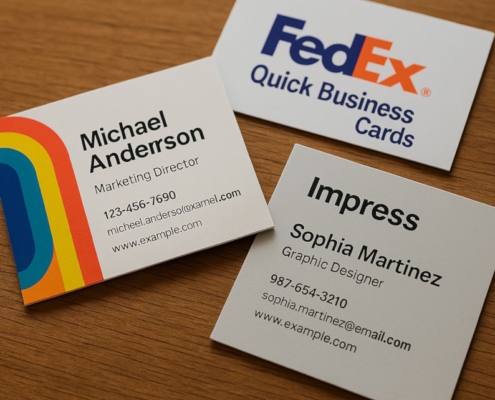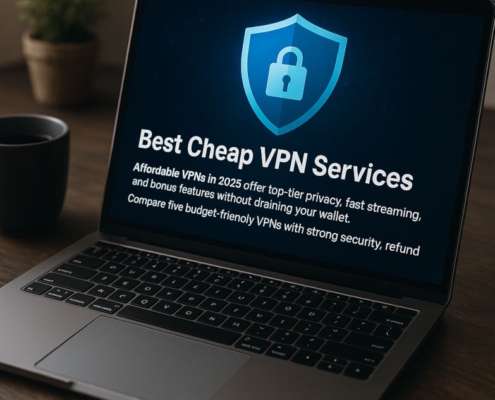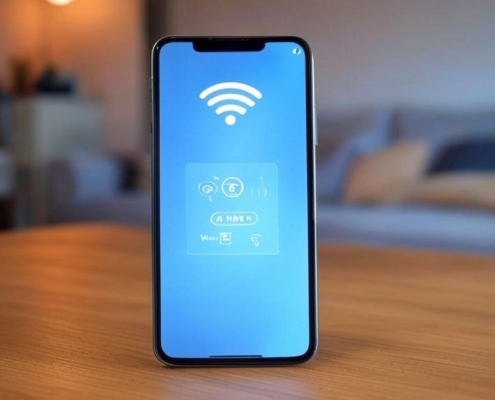Introduction
Employing software to keep tabs on your spending might help your staff work more productively and save you both money and time. Additionally, it gives you information on how much your company spends, which will make your life—and your accountant’s—far simpler during the time to file taxes. That’s why investing in small business expense tracking tools is essential.
Take a look at company expense trackers designed especially for your most frequent spending categories. If your staff members frequently drive for work, for instance, limit your options to software programs that mostly monitor mileage. To reduce the amount of time spent entering data by hand, ensure that the tracker is integrated with your accounting software.
These are some of the top small business expense tracking tools available.
1. QuickBooks Online
Why we find it appealing
The robust feature set, scalability, and capacity to support small businesses with increasingly intricate financial requirements have made QuickBooks Online a pioneer in the accounting sector. You can be sure your accountant is aware of it because it has millions of users globally.
Pros
- Information sharing with your accountant is simple, and you can readily access online tools and QuickBooks specialists if necessary.
- Over 750 apps have been integrated.
- A strong feature set consists of inventory management, invoicing, reporting, record-keeping, and a functional mobile app.
- Support via phone and chat is available for all plans Monday to Saturday.
Cons
- More costly than the competition.
- Regular price hikes and a propensity for upselling.
- There is a cap on the number of users per plan.
2. FreshBooks
Why we find it appealing
FreshBooks is a straightforward and reasonably priced choice for independent contractors and small businesses that value being able to work from anywhere with a mobile app. For people who can operate within the billable client restrictions of lower-tier plans, it’s a very affordable option. All plans consist of time monitoring.
Pros
- The FreshBooks smartphone application allows you to stay in contact with your clients and receive notifications when invoices are seen or past due.
- Robust accounting systems are accessible with intuitive, configurable invoicing features.
- All options allow you to keep track of time and include billable hours in invoices.
- Phone support during the week for all plans.
Cons
- Only two users are included in the highest-priced Select plan ($11 a month for extra users), while lower-tier plans restrict the number of billable clients.
- Bank reconciliation, accountant access, and double-entry reports on accounting are not included in the least-priced package.
3. Xero
Why we find it appealing
Every subscription plan in Xero offers unlimited users, which is a useful feature for companies where multiple individuals would want at least minimal access to the software in order to run reports or examine performance. Additionally, Xero features a dashboard for analytics that is customizable, allowing users to hide or rearrange panels.
Pros
- Users are unlimited across all price tiers.
- Connects to over 1,000 third-party applications.
- The feature set consists of a great mobile application and report suite, strong invoicing capabilities, and Hubdoc-based automated bill & receipt capturing.
- Simple design and user-friendliness.
Cons
- Customer service is not provided by phone, although callbacks are offered.
- Invoices and bills are limited to five and twenty per month, respectively, under the entry-level subscription.
- The highest-tier structured plan must be subscribed to in order to claim expenditures.
4. Zoho Expense
Why we find it appealing
Plans from Zoho Expense are available for a range of business levels and requirements. It makes tracking expenses easier with its well-reviewed Android and iOS mobile apps.
Pros
- Provides a plan that is free.
- All subscriptions, including the free one, come with connectors for widely used accounting software.
- Many of the functions in the most basic subscription plan are part of the extensive collection of cost-control tools.
- Robust mobile applications for Mac, iOS, Android, iPad, and Apple Watch.
Cons
- Upgrades to a premium plan may be necessary due to the free plan’s user & receipt scan limitations.
5. Expensify
Why we find it appealing
For many small and medium enterprises, Expensify provides a good all-around solution for tracking business spending. You pay monthly per employee, but if you subscribe annually or utilize Expensify’s business card, you can get discounts. (You can also use that card’s rewards money to pay for subscription costs.) Accordingly, your expenses could range from as little as $0 to upwards of $36 per employee.
Pros
- Connects to widely used HR and accounting software.
- Scalable as your company expands.
- Includes a wide range of functions beyond tracking expenses, such as bill payment, trip management, and invoicing.
- All-in-one small business expense tracking suite
Cons
- The pricing isn’t really clear.
- Per-user costs can easily go up if you have a large workforce.
6. SAP Concur Expense
Why we find it appealing
Together with Concur’s travel and invoicing software, SAP Concur Expense is a robust company expense tracking tool that can provide your company with a comprehensive spend management system.
Pros
- Capturing and reporting expenses is made quick and simple by automated functions.
- Comprehensive reporting and dashboards for insights into business spending.
- Xero and QuickBooks integration
Cons
Best small business expense tracking apps: Summary
1. Xero: Xero is among the best accounting software options available. Tracking and managing expenses is made easier with Xero, an integrated accounting software. The tools for managing expenses include scanning receipts, tracking miles, a dashboard with reporting capabilities, and an employee mobile app that makes it simple to track mileage and submit expense reports. You may save money overall by combining software subscriptions and opting for a comprehensive accounting system that incorporates cost management, such as Xero.
2. QuickBooks Online: Being one of the most widely used accounting programs available, QuickBooks Online has developed a comprehensive suite of features that includes project management, processing of payments, reporting, mileage and cost tracking, invoicing, and bill management. It may be possible to satisfy your demands for tracking expenses with QuickBooks’ built-in functionality if you already use it for accounting for your company.
The program allows you to link corporate bank accounts in order to automatically track and classify spending, scan and upload receipts, and create reports to keep tabs on expenditures. Among other things, the smartphone app allows you to track your miles and spending while you’re on the go.
3. FreshBooks: This is the best accounting program for independent contractors and self-employed professionals. For small businesses with basic accounting, billing, and spending tracking requirements, FreshBooks is a reliable and cost-effective option to handle all of those tasks in just one software package.
In both the Plus and Lite versions, the software offers you unlimited time and cost monitoring, automatic bank imports, mile tracking, tax reporting, budget and invoicing management, and more. Furthermore, FreshBooks provides subscriptions with a variety of extra capabilities, such as accounts payable and committed customer assistance, if your company employs a staff or contracts with outside parties.
4. Expensify: The features offered by Expensify for tracking company expenses include limitless receipt scanning, next-day payment on accepted expense reports, and the opportunity to import card payments from both personal and business accounts. Among the many additional apps that Expensify interfaces with are Zenefits & Gusto for human resources, QuickBooks & Xero for accounting, and Lyft and Uber for automatic receipt import.
Using Expensify’s corporate credit card and paying for their subscription annually rather than monthly allows company owners to enjoy discounted pricing for paid plans. Plans are also available from the company for independent contractors.
5. Zoho Expense: With the free version, Zoho Expense provides a good range of capabilities, such as accounting integrations, individual card connections, client and task tracking, and mileage monitoring. Many more options pertaining to travel, card expenditures and management, expenditure reports, budgeting, and other topics become available when you upgrade to a paid plan. Slack, Lyft, G Suite, QuickBooks, Xero, and other business software programs are all integrated with Zoho Expense.
6. SAP Concur Expense: Data security, regulatory compliance, and automated technological capabilities are prioritized in Concur Expense, which is a component of SAP’s enterprise-level business platform. Together with its quote-based pricing, this makes Concur Expense a good choice for enterprise-sized businesses. For organizations, Concur’s trip tracking and invoicing software accomplishes a comprehensive spend management package.
All of these tools excel in small business expense tracking, helping business owners stay on top of their finances effortlessly.
Small business expense tracking apps: How do they operate?
Usually, you can use a smartphone app or the internet to track business expenses. An account and login credentials for a certain number of employees are provided when you register with a provider.
Product-specific sign-up procedures vary, but most trackers ask for some basic financial and company information. In order to maximize the software’s functionality, you should connect it to a company credit card or checking account. After submitting receipts, your workers will be given the option of connecting their individual bank accounts in order to get reimbursement for authorized business-related spending.
With company expense trackers, you can keep track of your spending and see where you’re spending the most money. You may additionally avoid overpaying with their assistance. One way to check if you are sticking to your budget with each line item is to combine all of your marketing or inventory-related costs into one group. It is simpler to maintain cash flow with this information.
How to pick an expense tracker for your business
The majority of corporate spending trackers have at least a few of these capabilities. Find out which trackers offer the finest versions of the capabilities you want to use most frequently.
- Compliance: The “Public Company Accounting Reform & Investor Protection Act,” commonly referred to as the SOX (Sarbanes-Oxley Act), must be complied with by all cost-tracking software. Through increased accuracy and dependability of company disclosures, SOX aims to safeguard investors. Additionally, data storage for a maximum of 7 years should be included in all corporate cost tracker apps. The IRS requires this in the event that an audit request is ever made.
- Integrations: For information to flow easily between corporate stakeholders, your accounting software and business spending tracker should be integrated. Major providers like Xero and QuickBooks will be integrated with the majority of applications.
- Use Interface: The software should be simple for staff members to configure and use if they will be submitting costs on the company’s behalf. Choosing an application that is easy to use and accessible will help you avoid future logistical issues. It is important to ensure that employees who work abroad may access the program in their native tongue and input their expenditures in the currency they use, as the software should handle the conversion.
- Mobile Access: Having a strong mobile app is a necessary component of being user-friendly. Entering spending into the program as soon as feasible is, after all, the easiest way to keep track of them. Receipt picture capture tech should be incorporated into your app to achieve this. This lets you use your phone to take photos of receipts and upload them straight to the app.
You may extract as many specific details as you can from receipts without personally entering any data thanks to optical character recognition (OCR), which is a feature of the top business expenditure trackers. This technology automatically transforms handwritten or printed language into text that is machine-readable.
- Analytics: You must be able to better comprehend where your cash is going by using your company cost tracker to arrange your expense data. You ought to be able to observe, for instance, how expenditure varies from week after week, month after month, and year after year. Additionally, you should be able to make budgets and allocate costs to particular projects in order to determine whether you are staying within your budget.






























